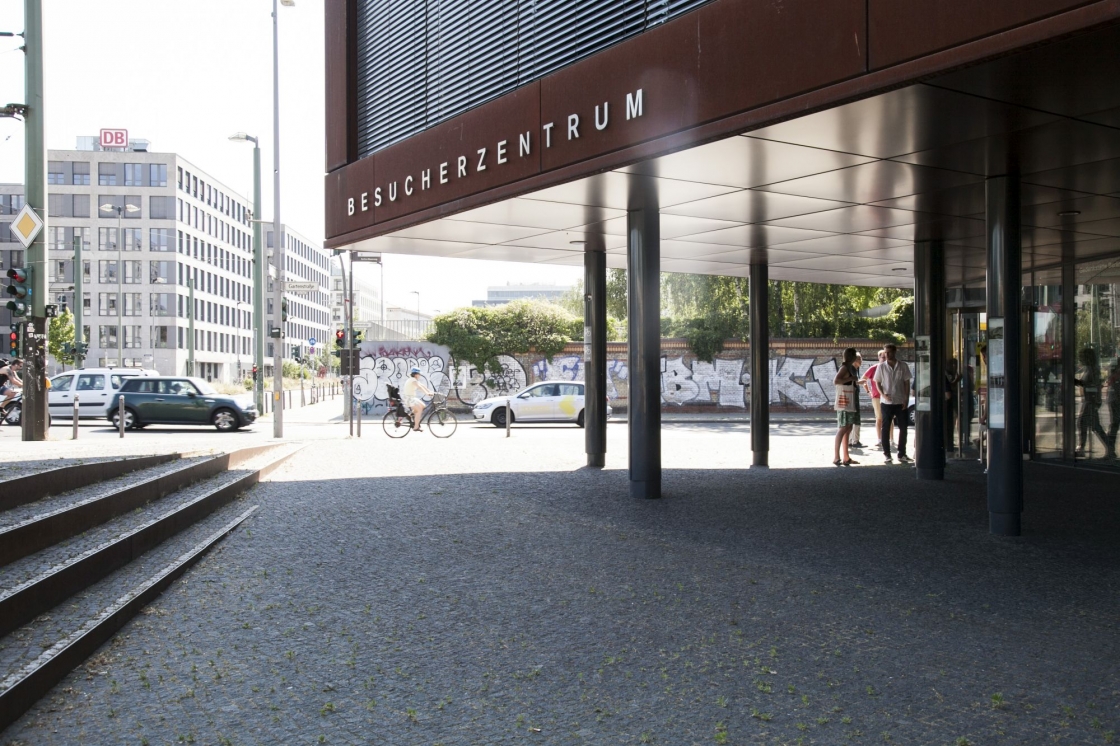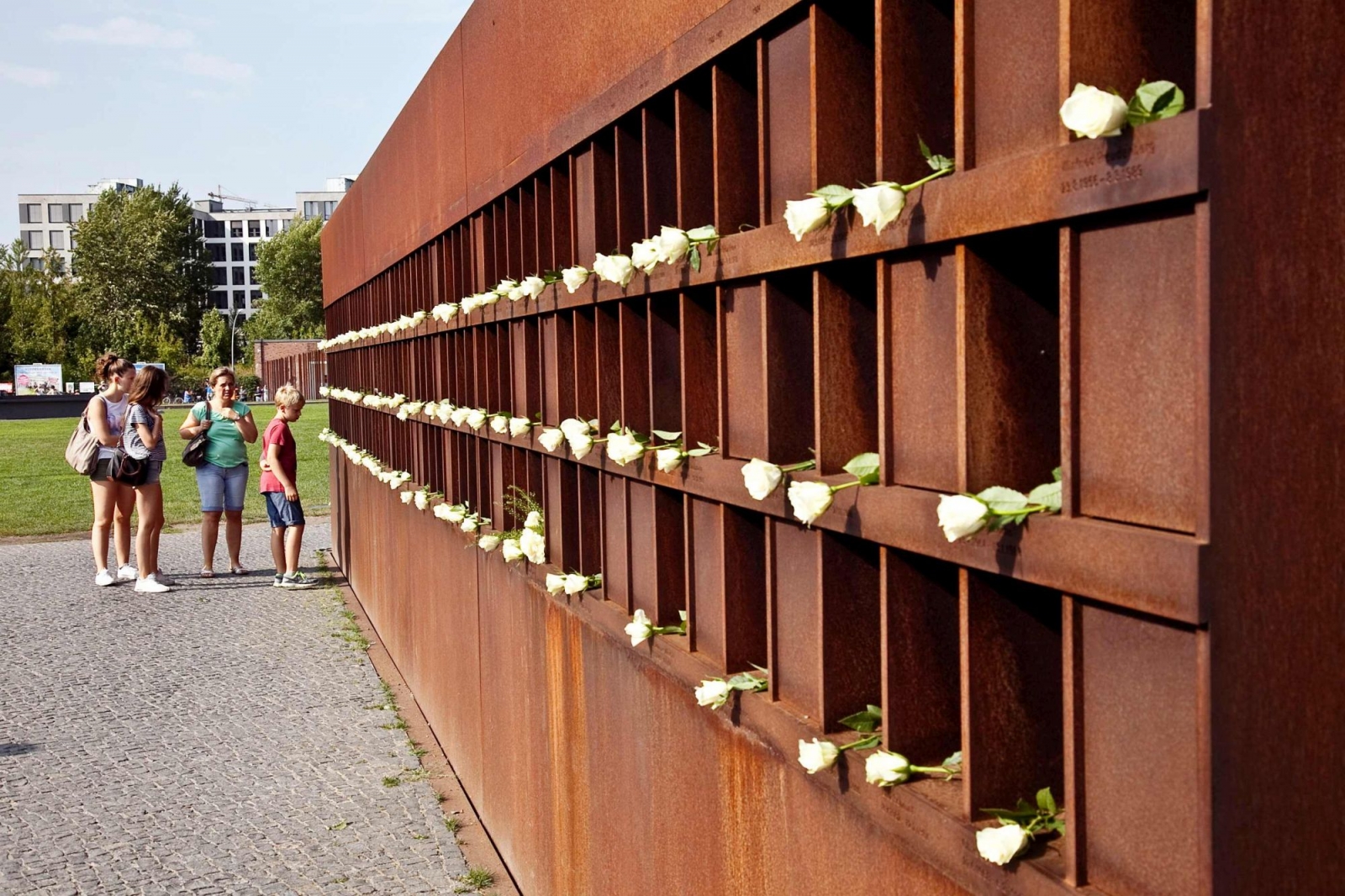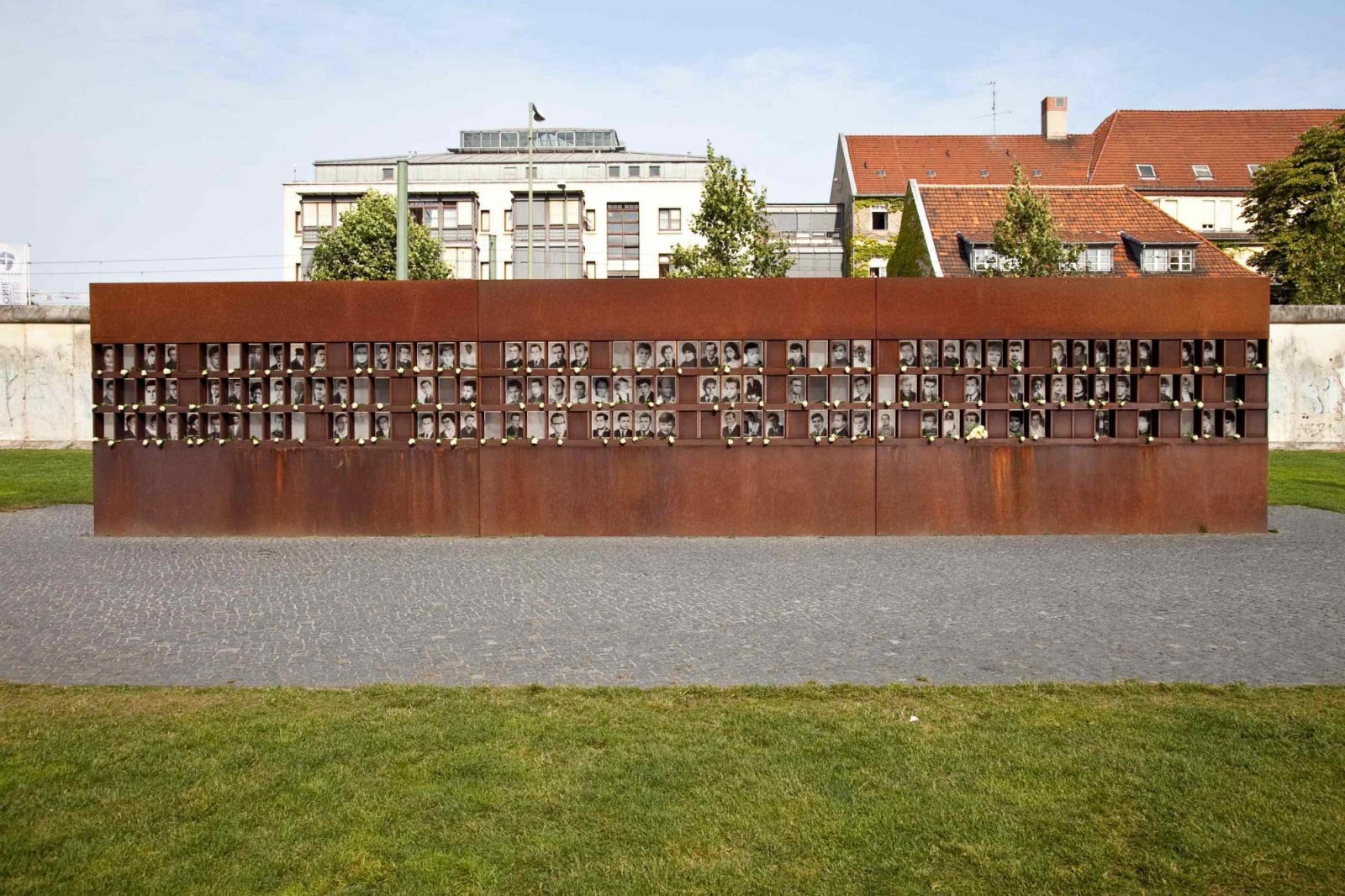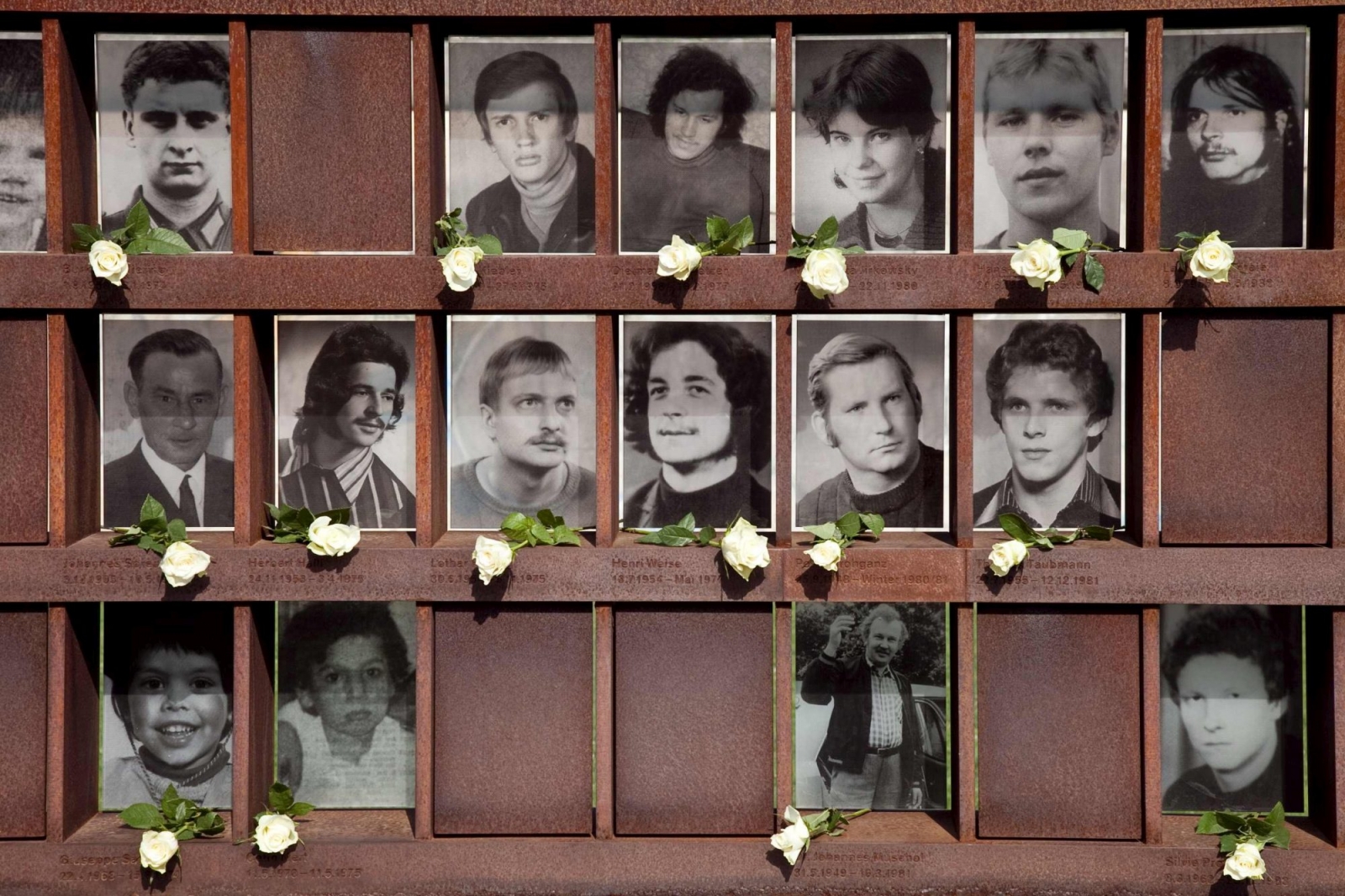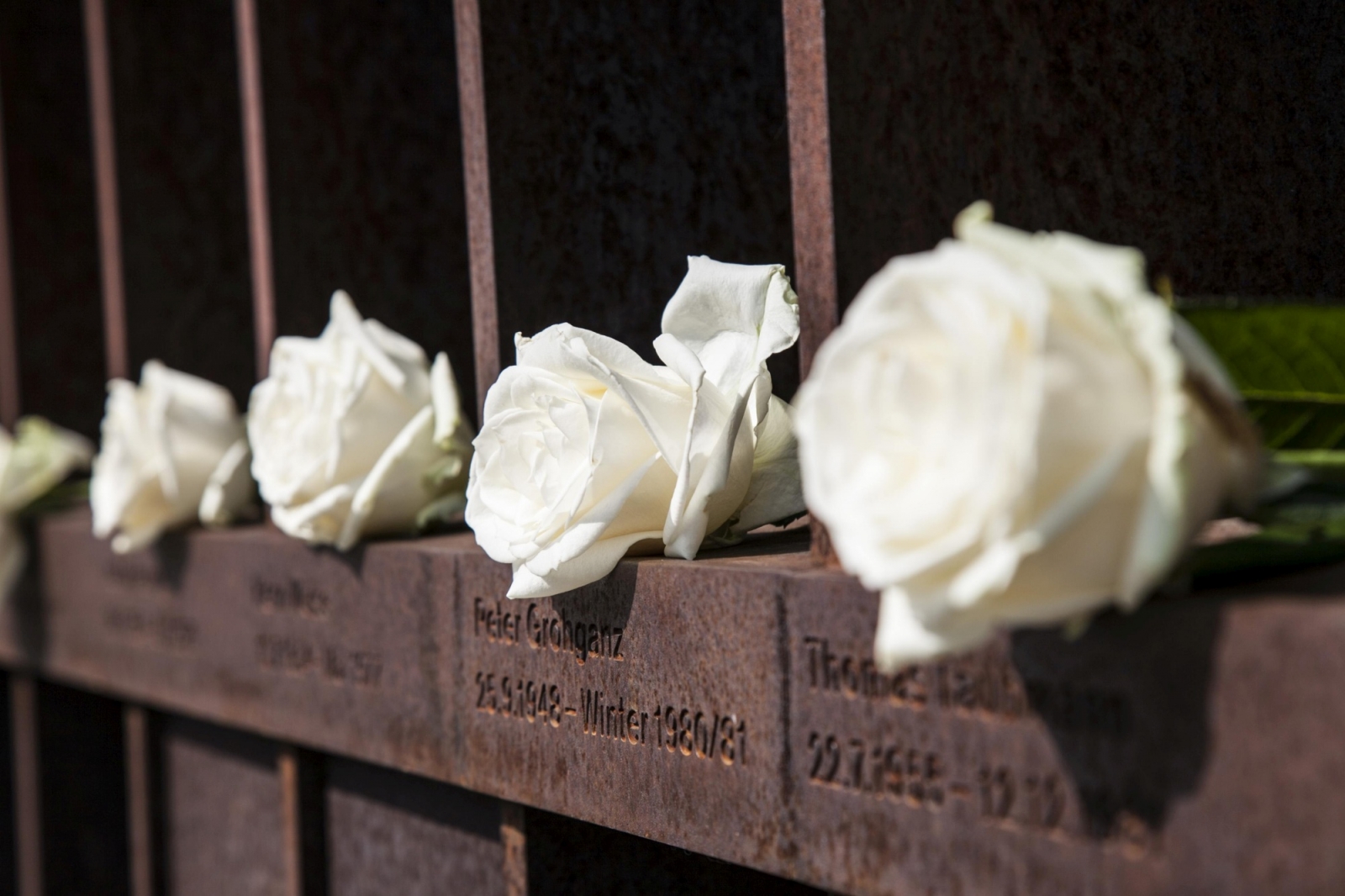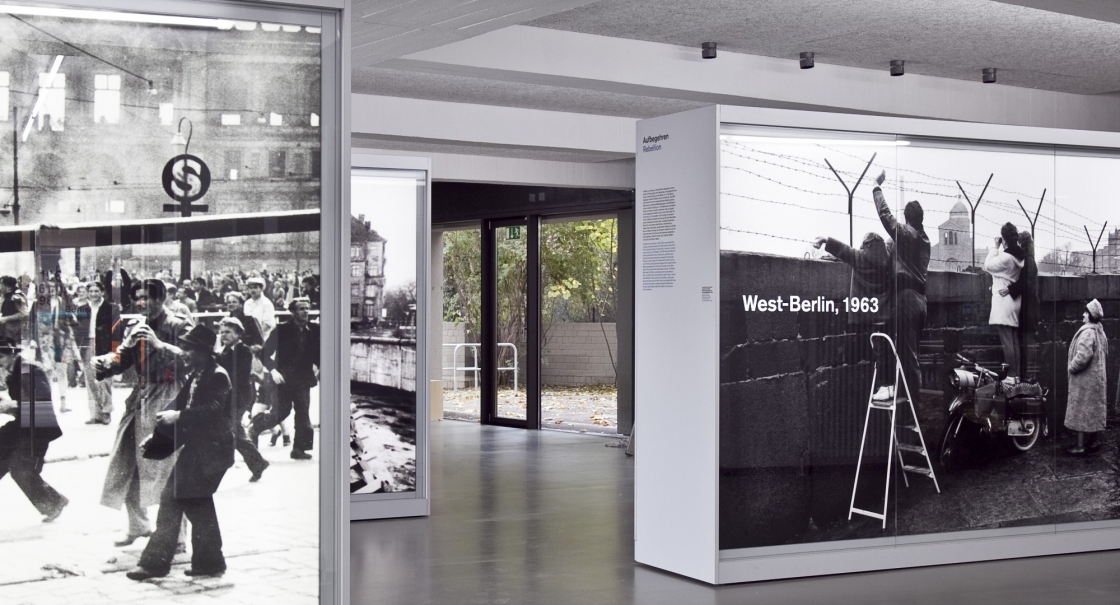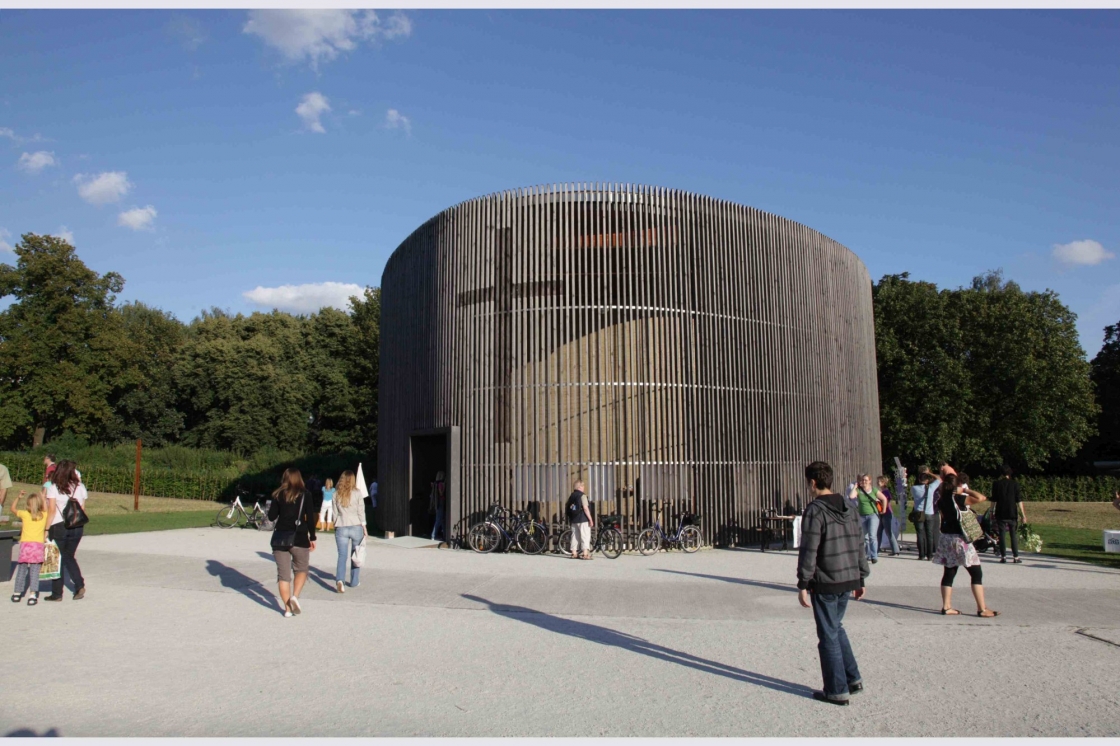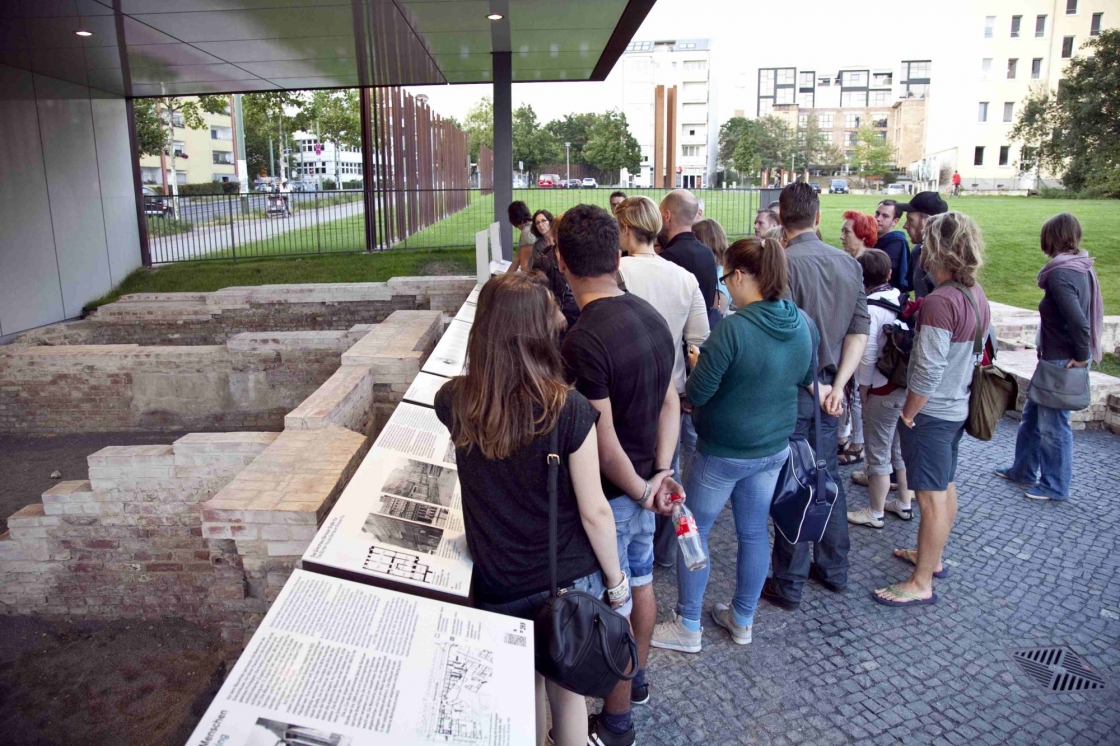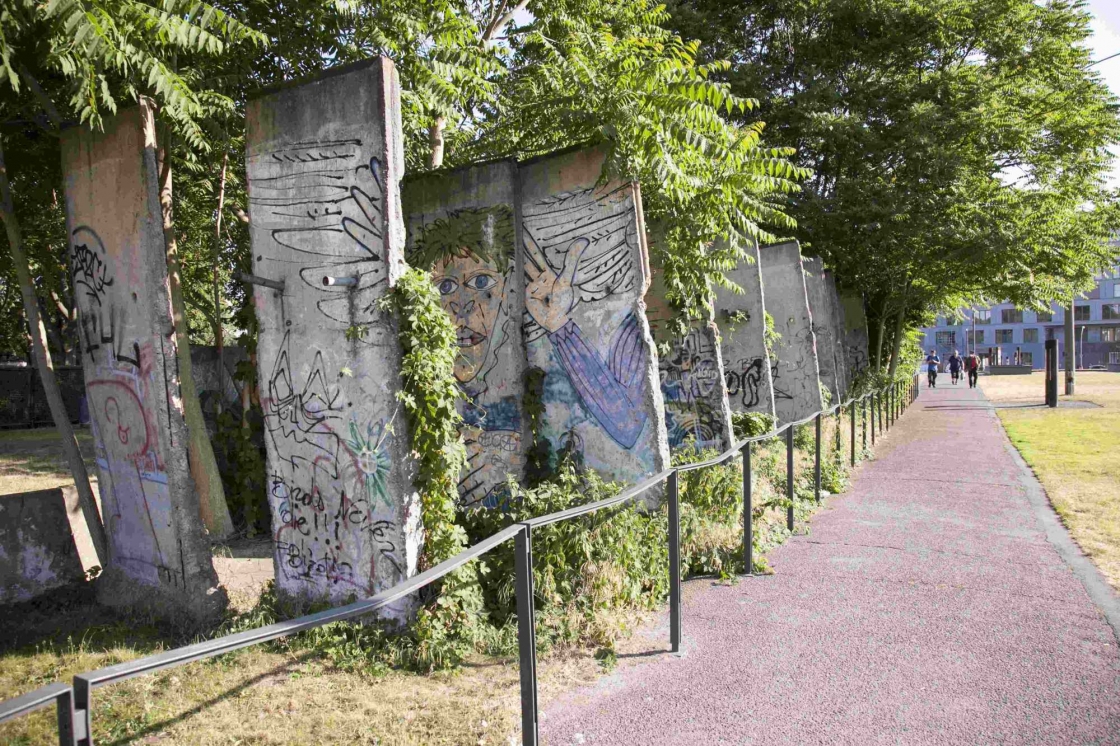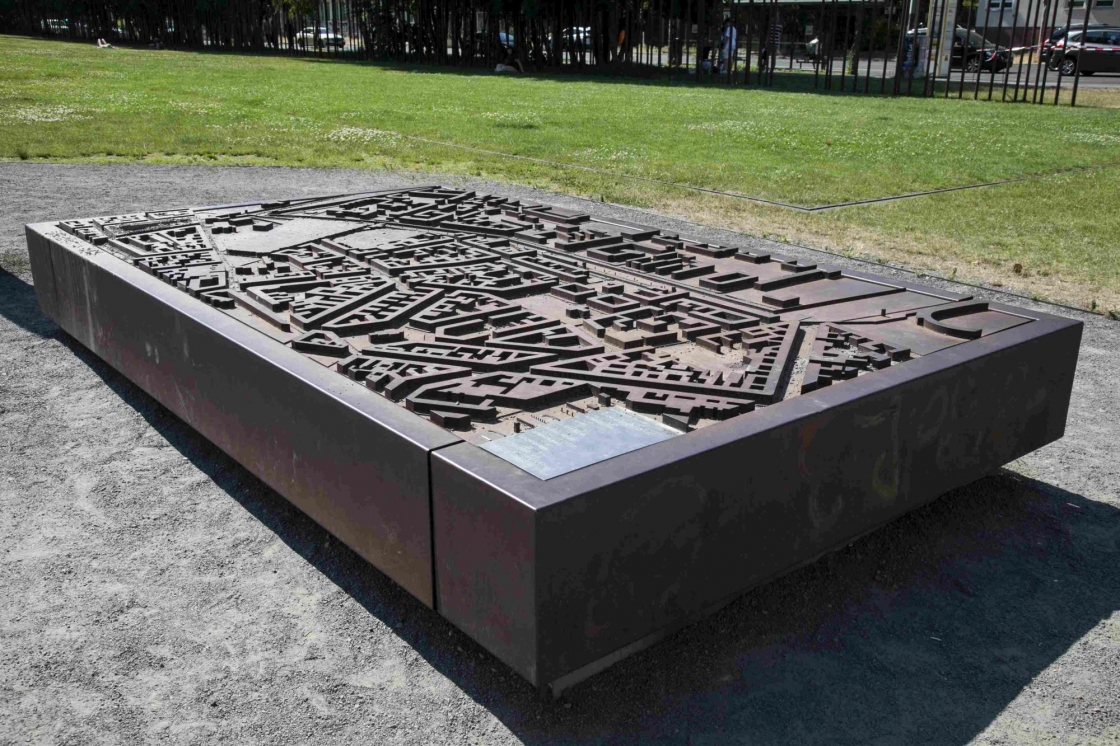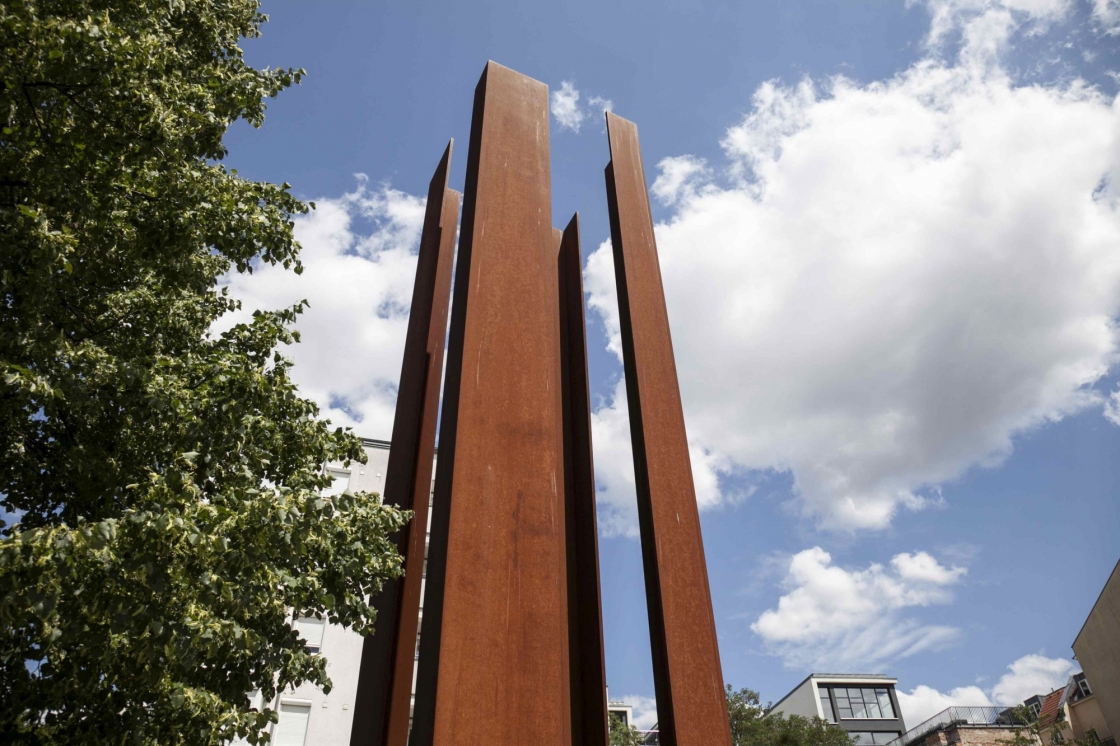Map
Discover the Berlin Wall Memorial, the central memorial dedicated to the history of German division, located at the historical site on Bernauer Strasse! Admission is free.
You will find everything you need to know about the memorial and its programs here. We present the memorial’s main attractions and an overview of our exhibitions and events. You will also find information regarding your visit and an overview of the public and private tours offered.
Index
The Visitor Center is the starting point for individual visitors and registered groups. It provides information about the entire memorial grounds and the programs offered both here and at other historical sites in Berlin. An introductory film about the history of the Berlin Wall is presented on the 1st floor of the Visitor Center. This is also where special events are held. A specialized bookstore on the history of the Berlin Wall and German division is located on the ground floor.
The Window of Remembrance is one of the Berlin Wall Memorial’s central sites. It commemorates the 132 civilians who died at the Berlin Wall and presents their names, dates and a photo – if one exists. It is a place for individual commemoration of the people who died at the border – those who were trying to flee and those who were not, those who were shot and those who died by accident.
The names of eight border soldiers who were killed while on duty and therefore are also counted as victims of the Berlin Wall are presented on a nearby column on the patrol path.
Two tall steel walls enclose a 70-meter section of the border strip and make it inaccessible – just as it was before 1989. Traces of the original border fortifications are preserved within the border strip. The monument design, however, also includes reconstructions: the marks left behind by “wall peckers” were smoothed over with new plaster; parts of the original inner wall were replaced; and a watchtower was erected on the grounds that is identical to the one that had stood here originally. The inscription on the monument reads: In memory of the divided city and the victims of communist tyranny.
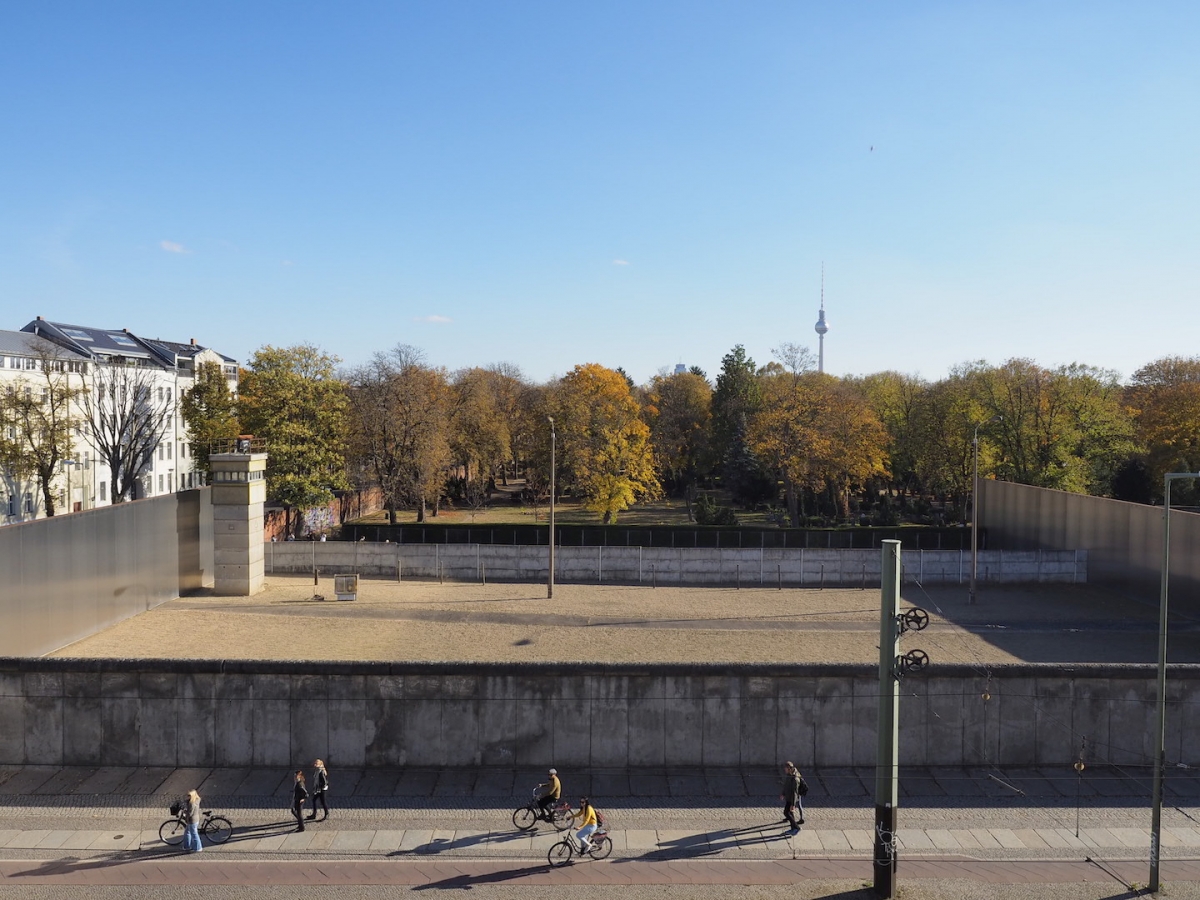
The memorial’s Documentation Center, located in the parish hall of the Protestant Reconciliation Parish, presents the permanent exhibition “1961 | 1989. The Berlin Wall.”. The exhibition shows why the Berlin Wall was built, how it could exist for 28 years and how the fall of the Berlin Wall happened. The parish built the building in 1965 after its church was closed off behind the Wall. From the 1st floor, parish members could see the church in the border strip and this gave them hope that they would one day be able to return to their church. Today, structural details recall that the room had originally been built as a parish hall.
The Chapel of Reconciliation, dedicated in 2000, was built on the exact spot where the Reconciliation Church had once stood. After the Wall was built in 1961, the church of the Protestant Reconciliation Parish, which stood inaccessible within the border strip, became a symbol of Germany and Europe’s division. To accommodate the ongoing expansion of the border grounds, the GDR government dynamited the church in 1985.
The altarpiece, which was removed from the church before demolition, and a cellar staircase with relics of a bricked-up cellar door from 1961, are on display inside the chapel. In front of the chapel, the original church bells are suspended in a horizontal bell tower and rung by hand. The tower cross and relics from the destroyed church’s column capitals lie on the chapel grounds. An archaeological window exposes the foundation walls that had been buried beneath the surface.
That chapel serves parish members and visitors as a place for commemoration and prayer. Prayer services for the victims of the Berlin Wall are held at 12 p.m. from Tuesday to Friday.
The border ran right along the edge of the buildings on Bernauer Strasse. This meant that the buildings belonged to East Berlin, but the sidewalk in front of them was already part of West Berlin. After the Wall was built in 1961, the GDR government had the buildings on the border vacated, bricked up, and later demolished. The memorial excavated the cellar of one of these border houses to make it visible again. Stories are told here about the people who lived in these buildings on the border before and after the Wall was built. After the border was closed, many residents escaped through their apartments by sliding down ropes from their windows or jumping into the rescue nets of the West Berlin fire brigade.
The patrol path was an integral part of the border fortifications. This is where the border guards patrolled the border strip on foot, on motorbikes and in vehicles. Large sections of the patrol path have been preserved on Bernauer Strasse. Corten steel plates have been installed in the ground where the original path no longer exists. Today, visitors can follow the path through the entire memorial site.
Visitors will find a model of the memorial grounds at three prominent areas. The model shows the line of the border and the structure of the border grounds on Bernauer Strasse. It also provides an overview of the memorial grounds.
A sculptural representation of a watchtower made of Corten steel stands on the corner of Strelitzer Strasse. In 1962, border troops began erecting provisional guard houses, later watchtowers, at regular intervals along the border strip on Bernauer Strasse. They were aligned in such a way that border guards on the towers had a good view of their section of the border. In the 1980s, “BT 9” type observation towers were built on Bernauer Strasse. They were demolished in spring 1990, after the Wall fell. Today an identical watchtower stands inside the monument on Ackerstrasse. The foundations of the original watchtower were discovered in the ground during construction of the sculptural representation on Strelitzer Strasse.
